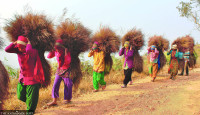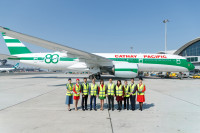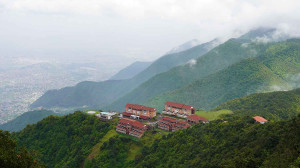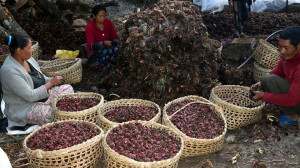Money
Dog chew exports pace up to match tea in value
According to the Department of Customs, chhurpi exports stood at Rs3.99 billion in the first 11 months of the current fiscal year, just short of tea exports.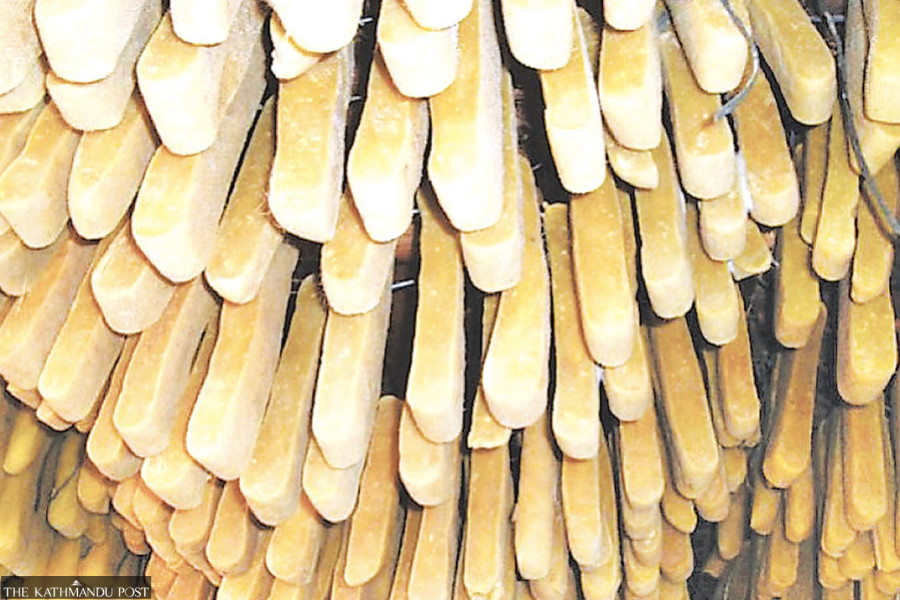
Post Report
Dog chew is fast catching up to tea in terms of export earnings, signalling a significant shift in Nepal’s export landscape.
According to the Department of Customs, dog chew exports stood at Rs3.99 billion in the first 11 months of the current fiscal year, just short of tea exports, which reached Rs4.20 billion over the same period.
Nepal exported 2,265 tonnes of chhurpi (hardened cheese) in this period, compared to 14,625 tonnes of tea. Last fiscal year, dog chew exports were 1,646 tonnes worth Rs3.18 billion, while tea exports stood at 13,916 tonnes valued at Rs3.62 billion.
The majority of both dog chew and tea production takes place in the eastern hill district of Ilam.
Exports of dog chew products grew by 34.34 percent compared to the same period last fiscal year, while tea exports increased by 32.91 percent. Industry insiders say around 90 percent of the dog chew produced in Nepal is exported, primarily to meet the demand in Western countries.
The United States was the largest importer of Nepali dog chew, purchasing 1,888 tonnes worth Rs3.49 billion. Canada imported 138 tonnes worth Rs308.47 million, and the United Kingdom imported 21 tonnes worth Rs59.25 million. Other destinations included Brazil, Greece, Hong Kong, Japan, South Korea, Malaysia, the Netherlands, New Zealand, the Philippines, Singapore, Taiwan, Thailand, Ukraine, and the UAE.
In contrast, most of Nepal’s tea—particularly crush, tear, curl (CTC) tea—was exported to India, which imported 14,060 tonnes worth Rs3.63 billion. Russia imported 268 tonnes worth Rs126.72 million, Germany 28 tonnes worth Rs54.69 million, France 15 tonnes worth Rs21.40 million, Japan 11 tonnes worth Rs13.94 million, and Iraq 22 tonnes worth Rs11.02 million. Nepal’s orthodox tea is mainly exported to France, Germany, India, Japan, Russia, and the United States.
Despite the success, dog chew exporters are sounding the alarm. Rising milk prices in Nepal are putting the industry at risk, they warn, making Nepali products less competitive against cheaper alternatives from other countries.
“In recent years, other Asian nations have started producing dog chews—markets we helped pioneer,” said Rajendra Kumar Shrestha, founder of Manaram Group, a leading pet food exporter. “With milk prices so high and no government subsidy, we are struggling to compete. Dog chew might go the same way as Nepal’s once-thriving carpet industry.”
Nepal’s hand-knotted carpet industry, once a top export, collapsed due to price competition and lack of policy support—an outcome traders fear may be repeated.
According to the Nepal Dairy Association, milk in Nepal is Rs10 to Rs12 more expensive per litre than in India, a key competitor in dog chew manufacturing. The price gap results in Nepali dog chew being Rs200 to Rs300 more expensive per unit than Indian products.
Government officials and industry leaders say that the rising cost of milk has also reduced domestic consumption and led to unpaid dues for dairy farmers. In March 2023, the government raised the minimum procurement price of milk to Rs65.5 per litre, up from Rs56.4. Currently, a litre of milk sells for around Rs100 in retail markets.
"Even compared to Indian products, there is a price gap of Rs200 to Rs300 per piece. If the government does not revise the milk pricing policy, Nepal’s dog chew industry may collapse,” said Shrestha.
Despite the pricing challenge, Nepali dog chews remain highly valued in global markets for their quality. Made from Himalayan yak milk using traditional methods, they contain no added preservatives, chemicals, or colouring agents—earning them the reputation of a premium product in the pet food sector.
“The high quality of Nepali dog chews has driven the export growth,” said one exporter. “But even though our costs are high, we’re forced to sell at lower prices to retain our market share. That’s unsustainable.”
Shrestha added, “The impact is not visible yet, but if things continue this way, international demand for Nepali dog chews will eventually decline.”
Meanwhile, the tea industry is also seeing improvements in production and value. “Production has increased, and the average value has gone up by 5 to 7 percent compared to last year,” said Kamal Mainali, president of the Nepal Tea Association. According to him, CTC tea is exported at INR125–150 per kilogram, while orthodox tea fetches around Rs500 per kilogram.
In the first 11 months of the current fiscal year, Nepal exported 14,625 tonnes of tea, up from 11,920 tonnes during the same period last year.
With dog chew exports nearly matching tea in terms of value, both sectors are emerging as vital contributors to Nepal’s export economy. However, stakeholders stress the need for policy support, particularly on milk pricing, to ensure the long-term viability of Nepal’s fast-growing pet food industry.




 16.63°C Kathmandu
16.63°C Kathmandu